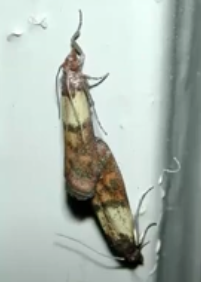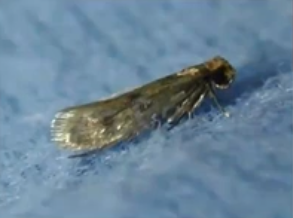What to Do About Insects That Come Inside?
go.ncsu.edu/readext?1035694
en Español / em Português
El inglés es el idioma de control de esta página. En la medida en que haya algún conflicto entre la traducción al inglés y la traducción, el inglés prevalece.
Al hacer clic en el enlace de traducción se activa un servicio de traducción gratuito para convertir la página al español. Al igual que con cualquier traducción por Internet, la conversión no es sensible al contexto y puede que no traduzca el texto en su significado original. NC State Extension no garantiza la exactitud del texto traducido. Por favor, tenga en cuenta que algunas aplicaciones y/o servicios pueden no funcionar como se espera cuando se traducen.
Português
Inglês é o idioma de controle desta página. Na medida que haja algum conflito entre o texto original em Inglês e a tradução, o Inglês prevalece.
Ao clicar no link de tradução, um serviço gratuito de tradução será ativado para converter a página para o Português. Como em qualquer tradução pela internet, a conversão não é sensivel ao contexto e pode não ocorrer a tradução para o significado orginal. O serviço de Extensão da Carolina do Norte (NC State Extension) não garante a exatidão do texto traduzido. Por favor, observe que algumas funções ou serviços podem não funcionar como esperado após a tradução.
English
English is the controlling language of this page. To the extent there is any conflict between the English text and the translation, English controls.
Clicking on the translation link activates a free translation service to convert the page to Spanish. As with any Internet translation, the conversion is not context-sensitive and may not translate the text to its original meaning. NC State Extension does not guarantee the accuracy of the translated text. Please note that some applications and/or services may not function as expected when translated.
Collapse ▲So a “bug” has come inside the house. Now what do you do? Well, take a breath and don’t panic. In fact, “Chillax”. You have to figure out what it is to determine if you have to worry about it. Let’s look at the steps to take. First, there is the importance of a good ID. It’s plain common sense to first know what you are dealing with. Next there are key characters that we look for when identifying an insect. Then of course checking legitimate resources to help with identification. “Legitimate” resources is a key word here. A nine year old with an opinion and imagination can publish on social media, and Google faster than I can, so just take that into consideration regarding evidence based accuracy.
 Moths are pretty common visitors. Some are less welcome than others. Some feed on fruit growing on bushes and other things like that, and not likely to cause damage to clothing or carpet or upholstery inside the house. These are accidental visitors – no reason to get too concerned about it. Most insects can enter your house – because essentially, you can enter your house and you are a lot larger than an insect.
Moths are pretty common visitors. Some are less welcome than others. Some feed on fruit growing on bushes and other things like that, and not likely to cause damage to clothing or carpet or upholstery inside the house. These are accidental visitors – no reason to get too concerned about it. Most insects can enter your house – because essentially, you can enter your house and you are a lot larger than an insect.
However, we all gotta eat, y’know. Sometimes food for certain insects is actually located indoors. There are ways to deal with these unwelcome diners. The Clothes moth is one of these critters looking for lunch at your house. Unfortunately, clothes are not the only thing they munch on- it could be a rug, upholstery, natural fiber materials. One isn’t such a problem, but they don’t stay single for long and lots of them can reach infestation levels depending on the hatch rate. So put on your best Sherlock Holmes hat and try to find the source of where these insects are munching and or nesting and quarantine it or get rid of it.
Meal moths don’t eat your sweaters. They are after that open box of grits or cereal, or some other grain that you have in storage. Even birdseed or dog food.
Lifecycle is important too because sometimes it’s not the adult stage that has the problem feeding habits – it is the juveniles with the bad dinner manners. For example, the caterpillar/larvae stage of the Large Tabby Grease Moth feeds on animal dung, and perhaps on various dead animal tissue. So, if these are what you’re seeing then you have another sanitation issue on your hands unless you live in a barn with animals. Especially since the full life cycle for this insect, from larval to adult, takes 2 years.
 So how do you know what you’re looking at? Each different group of insects has different things that you look at. The cameras on our mobile phones really help see things in Zoom from multiple angles. From the top down, the side view, from the underside, from the head. If it is a flying insect, try to get a clear shot of the wings, because that pattern of veins is very helpful for ID. When I am examining an insect, the shape of the antenna and the feet tell me a lot as well. Of course, the pictures need to be in focus, or all bets are off. Watching what they’re doing is important too because patterns of behavior tell a tale of their own. How they rest their wings – up or stretched out – won’t be the same. Some moths rest heads up, butts down, while with others it’s the reverse. Centipedes versus millipedes? You can count the legs per segment but remember that millipedes walk and centipedes run. Fast.
So how do you know what you’re looking at? Each different group of insects has different things that you look at. The cameras on our mobile phones really help see things in Zoom from multiple angles. From the top down, the side view, from the underside, from the head. If it is a flying insect, try to get a clear shot of the wings, because that pattern of veins is very helpful for ID. When I am examining an insect, the shape of the antenna and the feet tell me a lot as well. Of course, the pictures need to be in focus, or all bets are off. Watching what they’re doing is important too because patterns of behavior tell a tale of their own. How they rest their wings – up or stretched out – won’t be the same. Some moths rest heads up, butts down, while with others it’s the reverse. Centipedes versus millipedes? You can count the legs per segment but remember that millipedes walk and centipedes run. Fast.
My phone’s camera is good, but often I’m not still enough for a good shot, or the insect is too small or too fast, so an actual specimen that I can put under my microscope is the way to go. Popped into some alcohol is the most helpful. Smooshed is not, and if you think it’s a bed bug or lice, I’d rather it be dead when it comes to me, thank you.
There are some fun apps like iNaturalist that take the photo and with AI getting better and better, you can often get a pretty good ID and other fun information. It’s great to take on nature walks (if you can get signal) for butterfly ID. BugGuide.net is another useful tool to ID of all kinds of insects, with contributions from all over the world. It’s not bragging if it’s true, and the NC State Plant Disease and Insect Clinic (NCSU PDIC) is one of the best diagnostic labs in NC – and I dare say – in the US. They are tops and my go to resource if I need an assist. For more information, feel free to reach out to me – minda_daughtry@ncsu.edu.




